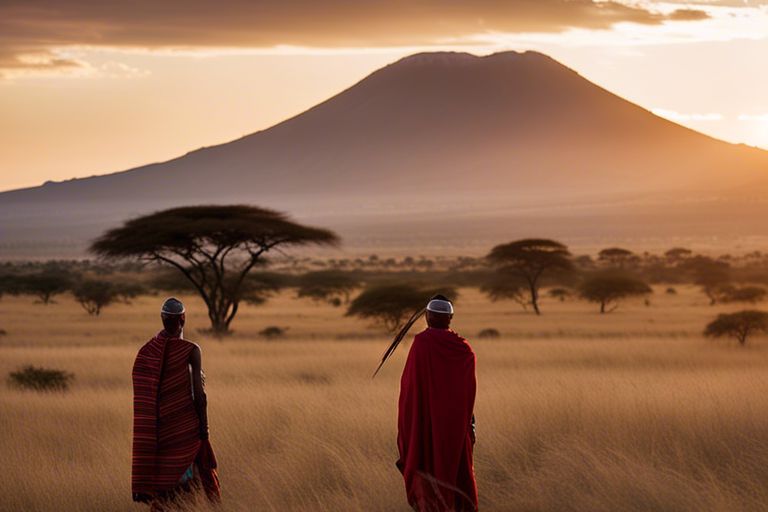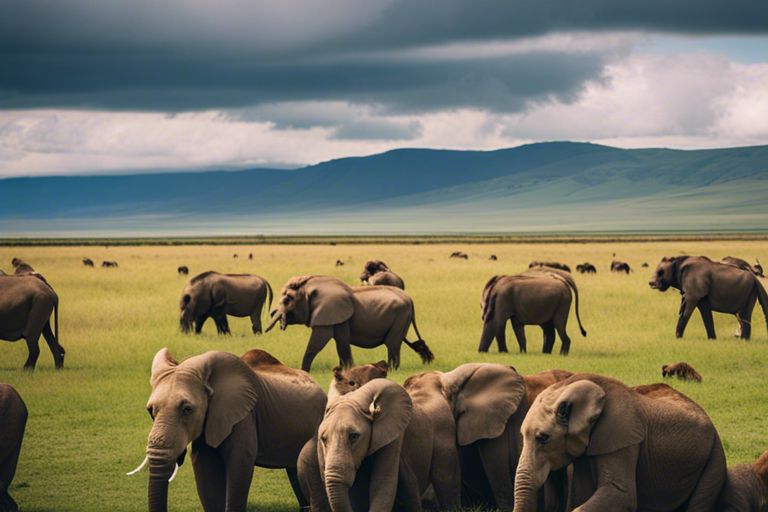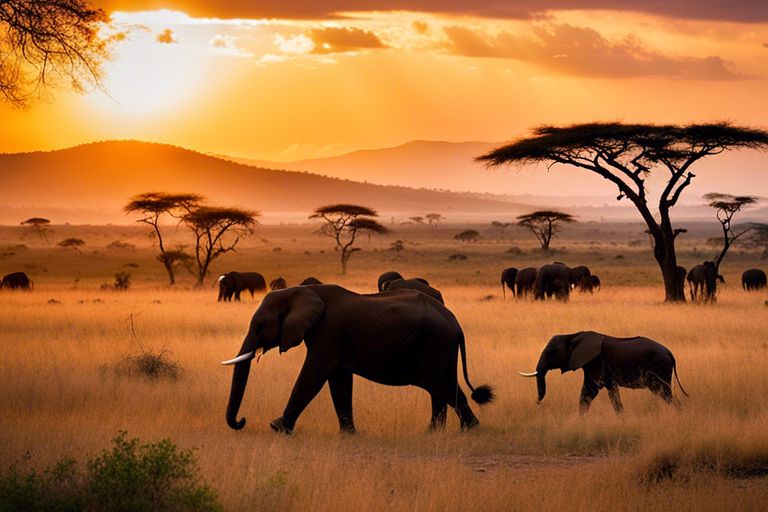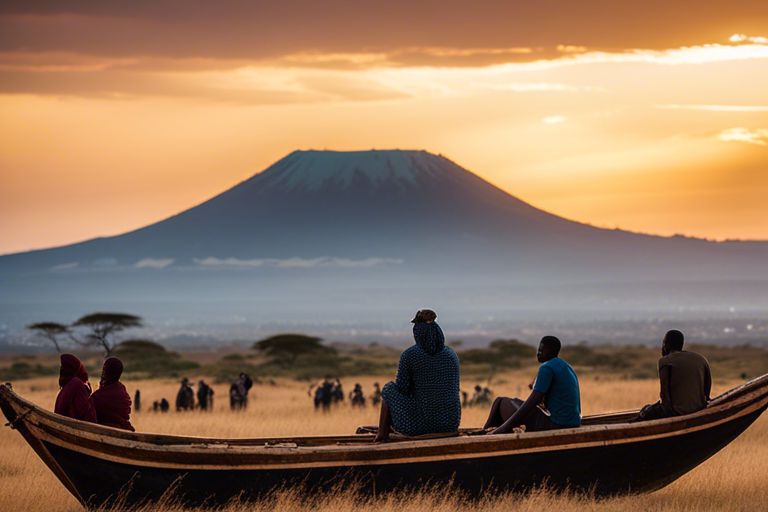The History of Tanzania – A Journey Through Time and Culture
Embark on a captivating journey through the rich history of Tanzania, where you will discover a tapestry of diverse cultures, ancient civilizations, and impactful historical events. From the early hunter-gatherer tribes to the powerful Swahili city-states and the colonial period, Tanzania’s past unfolds before your eyes, offering a deeper understanding of this fascinating East African nation. Join us as we explore into the enthralling history of Tanzania and explore the traditions that have shaped its vibrant cultural heritage.
Ancient Tanzania
While exploring the history of Tanzania, you cannot miss the ancient roots of this diverse and culturally rich country. The ancient history of Tanzania is a fascinating journey through time, showcasing the early inhabitants, the rise of trade, and the development of civilizations.
The Early Inhabitants
To understand the foundations of Tanzania, you must investigate into the lives of its early inhabitants. Tanzania has been home to various indigenous groups, such as the Sandawe, Iraqw, and Hadza, who have inhabited the region for thousands of years. These early settlers lived off the land, hunting, gathering, and eventually transitioning to agriculture as their communities grew.
The Rise of Trade and Civilization
For a significant period, Tanzania served as a crucial hub for trade and commerce along the East African coast. The region’s strategic location attracted traders from across the Indian Ocean, including Arabs, Persians, and later Europeans. This exchange of goods, ideas, and cultures led to the merging of traditions and the development of diverse civilizations along the Tanzanian coast.
It is fascinating to see how trade routes and interactions with foreign traders influenced the cultural landscape of ancient Tanzania. The Swahili coast, in particular, emerged as a vibrant center of trade and civilization, blending African, Arab, and Asian influences to create a unique culture that still resonates in Tanzania today.
Colonial Era
German and British Rule
Any beginning your exploration into the colonial history of Tanzania, it is imperative to understand the periods of German and British rule that significantly shaped the country. The Berlin Conference of 1884-1885 formalized German presence in East Africa, leading to the establishment of German East Africa which included present-day Tanzania. The Germans focused on economic exploitation, particularly in the profitable ivory and slave trade. This era was marked by resistance from local tribes, such as the Maji Maji Rebellion in the early 20th century, against oppressive colonial policies.
The Impact of Colonialism on Tanzanian Culture
On delving into the impact of colonialism on Tanzanian culture, you’ll find that the Germans and British left lasting imprints on the social fabric of the region. British colonial rule, following World War I, brought changes in governance and administration but also sowed the seeds of discontent among the diverse ethnic groups within Tanzania. The imposition of Western education and Christianity had a profound influence on traditional belief systems and practices, leading to cultural shifts and disruptions.
British colonial policies also reshaped traditional land tenure systems, leading to the displacement of local communities and the loss of access to vital resources. This period of disruption had long-lasting effects on Tanzanian society, impacting not only the economy but also the cultural identity of its people.
The Fight for Independence
Some of the most significant chapters in Tanzania’s history revolve around the struggle for independence from colonial rule. Tanzanians fought bravely and persistently to reclaim their sovereignty and establish a nation built on freedom and self-determination.
Nationalist Movements and Key Figures
For Tanzanians, the fight for independence was led by influential figures such as Julius Nyerere, who played a crucial role in inspiring nationalist movements and rallying the people towards a common goal. The formation of political parties like the Tanganyika African National Union (TANU) further united the populace in their quest for freedom from British colonial dominance.
The Road to Self-Rule
One significant milestone on the road to self-rule was the achievement of internal self-government in 1961, paving the way for full independence the following year. This period marked a turning point in Tanzanian history, as the people took charge of their own destiny and governance after years of colonial subjugation.
To achieve this goal, Tanzanians engaged in peaceful protests, mobilized grassroots movements, and participated in shaping the future of their nation through democratic processes. The road to self-rule was a challenging yet transformative journey that laid the foundation for the vibrant and independent Tanzania we know today.
Modern Tanzania
Post-Independence Challenges and Triumphs
All nations face challenges in the wake of independence, and Tanzania was no exception. In the post-independence era, Tanzania encountered political instability, economic struggles, and social issues. However, through resilience and determination, the people of Tanzania overcame these obstacles to achieve triumphs that have shaped the nation’s identity and future. From navigating political transitions to fostering national unity, Tanzania has demonstrated its ability to overcome adversity and emerge stronger than ever.
Economic Development and Growth
To support its growing population and foster economic prosperity, Tanzania has prioritized economic development and growth. The nation has implemented policies to attract foreign investment, promote industry diversification, and enhance infrastructure. As a result, Tanzania has experienced steady economic growth and development, transforming its economy and improving the standard of living for its people.
The economic development and growth in Tanzania have been further fueled by the nation’s rich natural resources, including minerals, agriculture, and tourism. These resources have not only contributed to Tanzania’s economic prosperity but have also attracted international interest and investment, positioning Tanzania as a key player in the global economy.
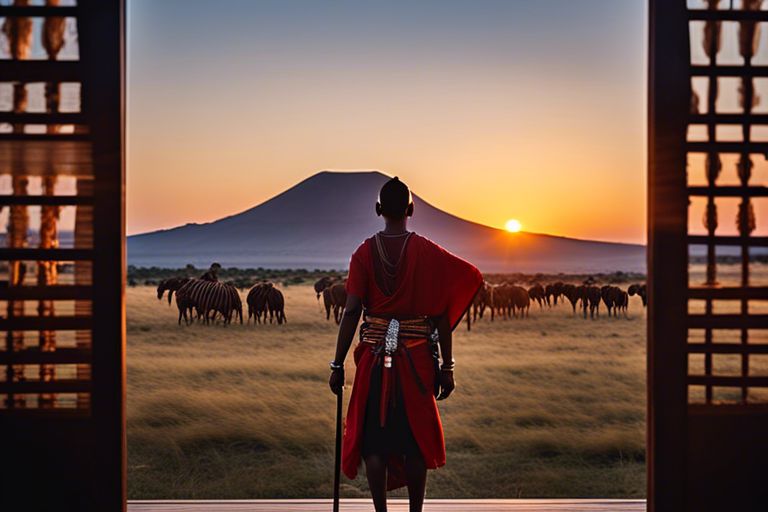
Cultural Heritage
Traditional Music and Dance
Heritage in Tanzania is rich and diverse, reflected in its traditional music and dance forms. Music and dance play a significant role in Tanzanian culture, with each ethnic group having its unique styles and rhythms. From the energetic and rhythmic sounds of the Chaga people to the graceful movements of the Zanzibar Taarab music, Tanzanian traditional music and dance are a vibrant expression of the country’s cultural identity.
Art and Craftsmanship
Cultural heritage in Tanzania also encompasses a wide array of art and craftsmanship. Tanzanian artisans are known for their skill in carving, weaving, beadwork, and pottery. Traditional artworks often reflect themes from nature, wildlife, and daily life in Tanzania, showcasing the country’s cultural diversity and creativity.
For instance, the Makonde tribe is renowned for their intricate wood carvings, depicting ancestral spirits and mythical creatures. These carvings are not only visually striking but also hold deep cultural significance, representing the tribe’s beliefs and traditions.
Cuisine and Food Culture
To truly immerse yourself in Tanzanian cultural heritage, you must explore its cuisine and food culture. Tanzanian cuisine is a blend of flavors influenced by Arab, Indian, and European cooking traditions. Staple foods like ugali (maize porridge), nyama choma (grilled meat), and pilau (spiced rice) are popular dishes that reflect the country’s diverse culinary influences.
Plus, Tanzania’s coastal regions offer a tantalizing array of seafood dishes, incorporating fresh fish and shellfish prepared with aromatic spices and coconut milk. Whether you’re dining in a local eatery or attending a traditional feast, Tanzanian cuisine is sure to delight your taste buds and provide insight into the country’s rich cultural heritage.
Natural Wonders
Once again, if you want to investigate deeper into the natural wonders of Tanzania, you should check out The History of Tanzania: From Kilimanjaro to Zanzibar eBook. In this chapter, we will explore some of the most breathtaking natural attractions that this beautiful country has to offer.
Mount Kilimanjaro and the Great Rift Valley
Natural marvels like Mount Kilimanjaro, Africa’s highest peak, and the Great Rift Valley, which runs through Tanzania, will leave you in awe of the sheer scale and beauty of nature. Mount Kilimanjaro is a dormant volcano with three distinct cones, and climbing to the summit is a bucket-list adventure for many nature enthusiasts. The Great Rift Valley, on the other hand, is a geological wonder that stretches over 6,000 kilometers and offers stunning views of lakes, mountains, and diverse wildlife.
National Parks and Wildlife Reserves
For wildlife lovers, Tanzania’s national parks and wildlife reserves are a paradise waiting to be explored. The Serengeti National Park, known for its annual migration of millions of wildebeest and zebras, offers an unforgettable safari experience. Other gems include the Ngorongoro Conservation Area, home to the Ngorongoro Crater, a haven for a wide variety of wildlife, and the Selous Game Reserve, one of the largest faunal reserves in the world.
Kilimanjaro National Park, at the base of the iconic mountain, provides an opportunity to witness diverse ecosystems from rainforests to alpine meadows. The abundance of wildlife, including elephants, buffalos, and various bird species, makes these parks and reserves a must-visit for any nature enthusiast.
Zanzibar and the Coastal Islands
Reserves like the Zanzibar Archipelago and other coastal islands off the Tanzanian shore are a tropical paradise waiting to be explored. The crystal-clear waters, white sandy beaches, and vibrant marine life make Zanzibar a popular destination for snorkeling and diving. The blend of Arabic, Indian, and African cultures in Zanzibar’s historic Stone Town adds a unique cultural element to your natural exploration of the coastal islands.
National parks in Zanzibar and the surrounding coastal areas showcase the rich biodiversity of the region, with unique species of flora and fauna that thrive in the tropical climate. The pristine beaches and turquoise waters make these islands a perfect escape for a relaxing and rejuvenating experience in the lap of nature.
Final Words
With these considerations, you have now taken a journey through time and culture in Tanzania. From the early settlements of the coastal regions to the colonial occupation and struggle for independence, Tanzania’s history is rich and diverse. You have explored the varied cultures and traditions that make up this East African nation, and gained insights into the resilience and spirit of its people.
As you reflect on the history of Tanzania, remember the impact of its past on its present and future. The heritage of Tanzania is a tapestry of different influences, woven together to create a unique and vibrant society. By understanding its history, you gain a deeper appreciation for the complexities and beauty of this country and its people. Your journey through the history of Tanzania has been a window into a world of remarkable stories and experiences that continue to shape the nation today.

